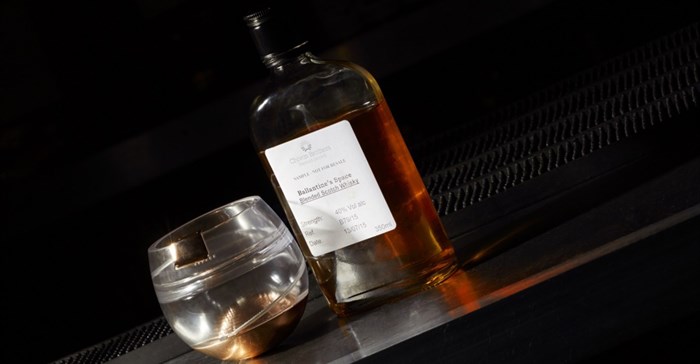Ballantine's launches the Space Glass

In celebration, Sandy Hyslop, Ballantine's master blender, subsequently crafted a special batch of Ballantine's Scotch whisky that accounts for the way people's taste buds are affected in space. "In space, you do not experience the sense of smell and taste with the same intensity as you do on Earth," said Hyslop. "This meant I had to make the Ballantine's Space Whisky more heightened in flavour and robust, whilst maintaining the Ballantine's signature style. Astronauts miss the taste of home so crafting a fruitier, stronger, more floral blend is a way they can keep the taste of home with them."
Captivated by a rise of 'astroprenuership', and the reality that space tourism will likely become increasingly more popular and attainable, Ballantine's grasped the opportunity to explore the next level of evolution and design for those objects that space travellers use in orbit. Part of Ballantine's' ongoing drive for innovation and collaboration with all forms of creative talent, the brand's goal was to help create a space-faring civilisation, helping to achieve this by, in Parr's words: "Importing all of the things we take for granted on Earth and replicating them in the future."
Genuine problems to solve
"We engaged with this project because it seemed there were genuine problems to solve," explained Parr. "We wanted to determine whether or not there are real aspects of design that would be making a contribution. The way liquids behave and are controlled in space is one of the fundamental challenges of space exploration; one of the fundamental things on which rocket scientists have worked so hard. As soon as you get out of Earth's gravity, liquids don't behave as liquids should."
"It's worth mentioning," said Parr, "that we also had a double brief in that we had to make it work on Earth as well as in space. So we encountered versions that would have worked in space but would have been useless for Earth and sometimes Sandy and I would look at each other and say: 'What about this?' and realise, no, it simply didn't work!"
Having successfully engineered and tested the Space Glass prototype in micro gravity at the ZARM Drop Tower in Bremen, Germany (after wrestling with the extensive science and engineering challenges faced a 12-month period), it's recent launch now speaks volumes.
Indeed, the Ballantine's Space Glass project solves one of the genuine complex engineering challenges of life in space. The 'glass' itself is, however, not made of glass, but rather it is 3D printed with medical grade plastic into a tumbler shape. The key technology sits inside the glass, where small channels in the side move liquid from the convex stainless steel base coated in rose gold, which the liquid sticks to, around to a mouthpiece. This is made of gold, as it is non-reactive, and is from where the user drinks.

To deal with the microgravity conditions of space flight, the Ballantine's Space Glass contains a magnet at its base, allowing it to attach to whisky bottles customised with their own magnets and a bespoke nozzle or 'straw' to deliver whisky into the glass. Once inside, in microgravity, the whisky wouldn't 'bounce around as a blob', but stick to the base and deliver liquid into the channels.
But not only is the glass innovative - solving fundamental scientific questions of how liquid moves in zero gravity - it is also beautifully designed, with the ritual of the sophisticated whisky drinking experience at its heart.









